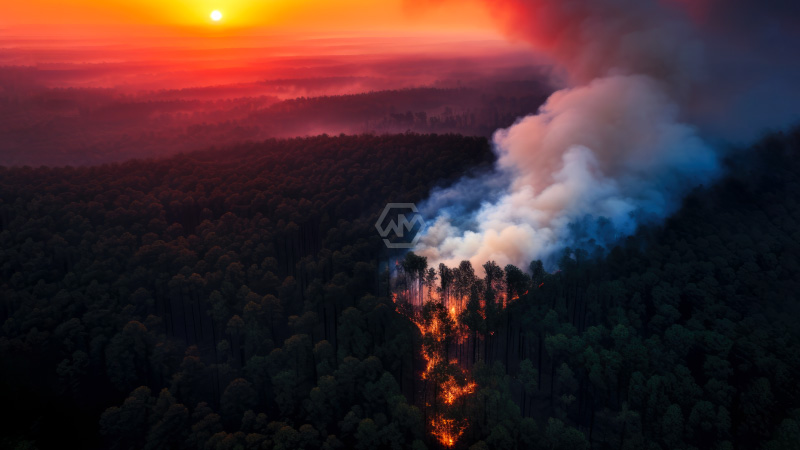- Brazilian Amazon records 13,489 wildfires in first half of 2024, highest in 20 years.
- Increase attributed to historic droughts and human-caused activities like agricultural burning.
- Pantanal and Cerrado ecosystems also see alarming wildfire spikes, posing threats to biodiversity.
The Brazilian Amazon has witnessed a staggering surge in wildfires, marking the highest number in two decades with 13,489 fires reported in the first half of 2024. This increase, over 61% compared to last year, is primarily linked to severe droughts and human-induced activities such as land clearing through burning.
Despite a decrease in deforestation rates, the dry conditions have left vegetation more susceptible to ignition, exacerbating the fire risk across the Amazon region and extending into the Pantanal and Cerrado ecosystems.
Environmental Crisis: Amazon Wildfires Threaten Biodiversity and Climate Goals
The Pantanal, known for its rich biodiversity including jaguars and caimans, has seen a dramatic escalation with 3,538 wildfires recorded in the same period, a stark contrast to previous years. The Cerrado, another critical biome, experienced 13,229 fires, nearly matching the Amazon’s count, highlighting widespread environmental challenges beyond the rainforest. Authorities have declared states of emergency, mobilizing resources to combat the blazes amid concerns that the wildfire season’s peak in September could worsen conditions further.
In addition to the Amazon, the Pantanal wetlands and Cerrado savanna have also experienced alarming increases in wildfire incidents, exacerbating environmental concerns across these biodiverse regions. The Pantanal, renowned for its jaguars and unique aquatic life, saw a staggering rise with over 3,500 fires reported, impacting habitats critical to numerous species. Meanwhile, the Cerrado, covering an area comparable to multiple European countries, faces similar challenges with over 13,000 fires detected, underscoring the widespread nature of the crisis.
Authorities in Brazil have responded by declaring states of emergency and mobilizing firefighting efforts, recognizing the urgency of the situation as the dry season progresses. The impact of these fires extends beyond immediate environmental damage, affecting local communities and posing long-term challenges for global climate goals. Efforts to curb deforestation and enhance firefighting capabilities will be crucial in mitigating further damage and safeguarding these vital ecosystems.
As Brazil contends with the highest wildfire figures in decades, urgent action is imperative to protect the Amazon, Pantanal, and Cerrado ecosystems. The unprecedented scale of these fires underscores the intersection of environmental conservation, climate resilience, and sustainable development, demanding coordinated efforts to address both immediate firefighting needs and long-term conservation strategies.
“Climate change is contributing… most of Brazil’s biomes are under stress due to a lack of precipitation.”



